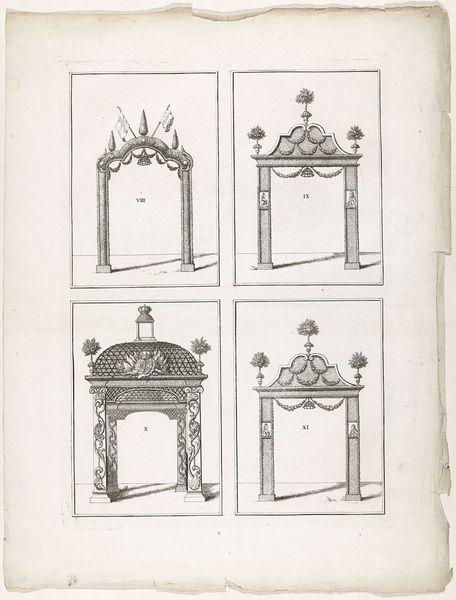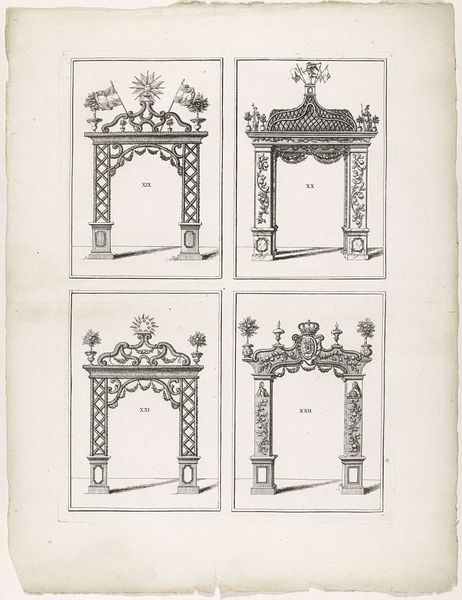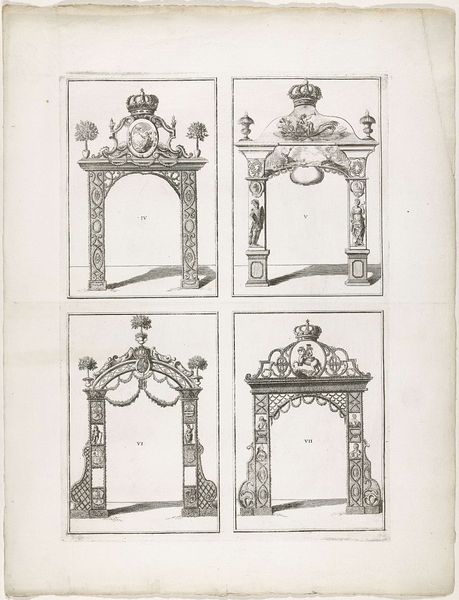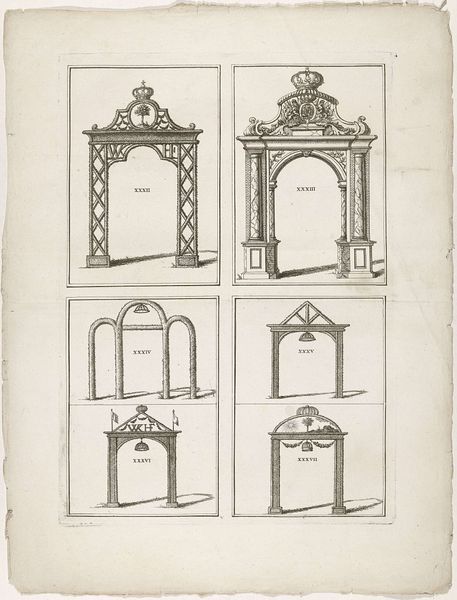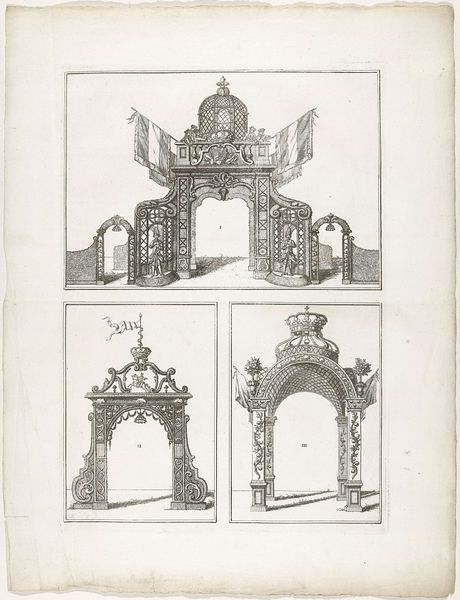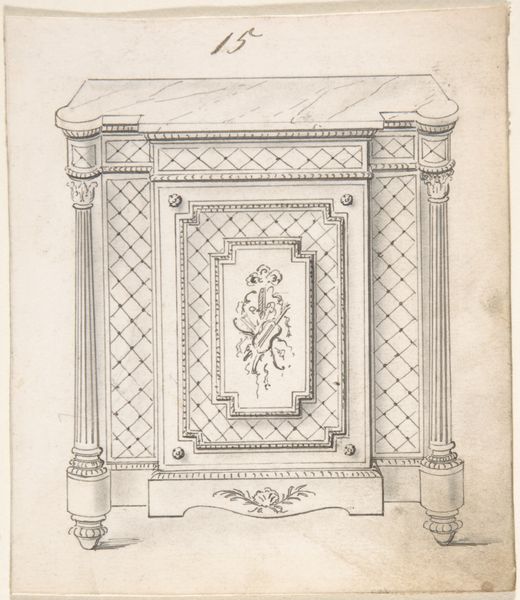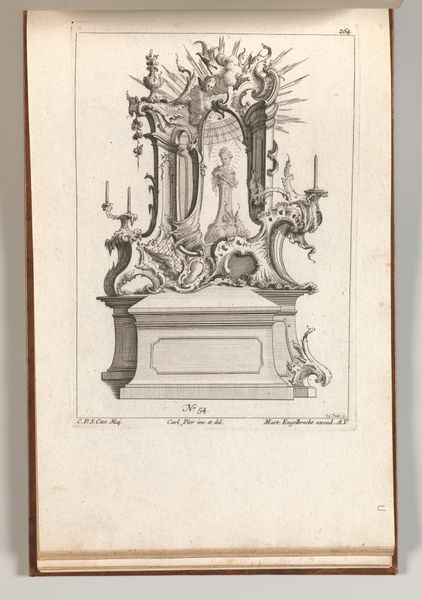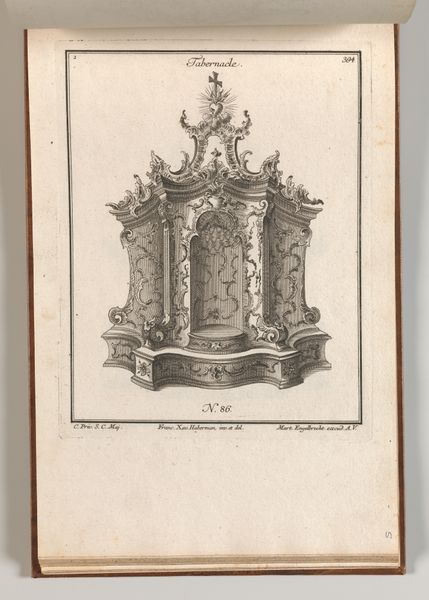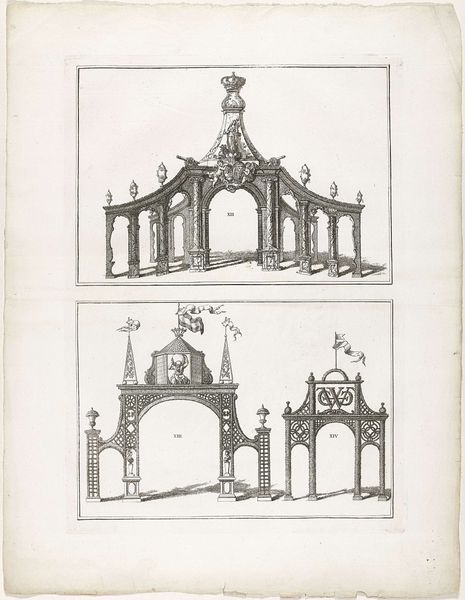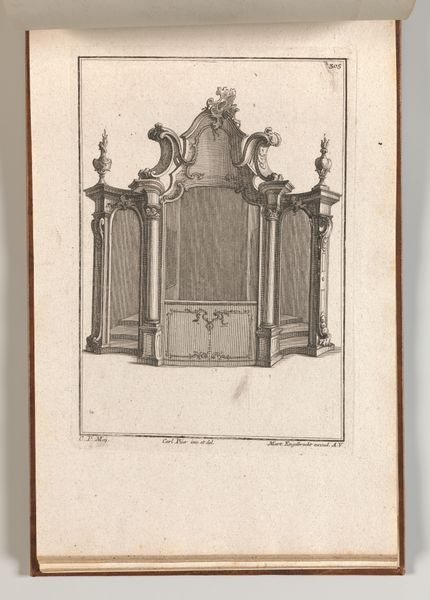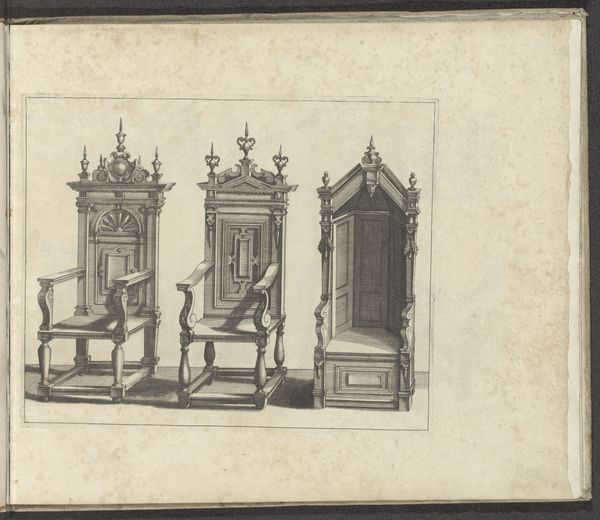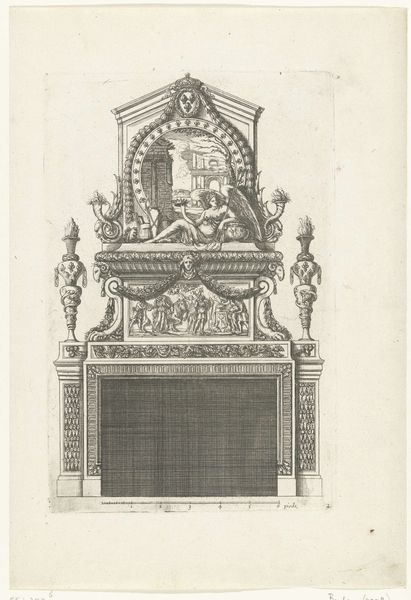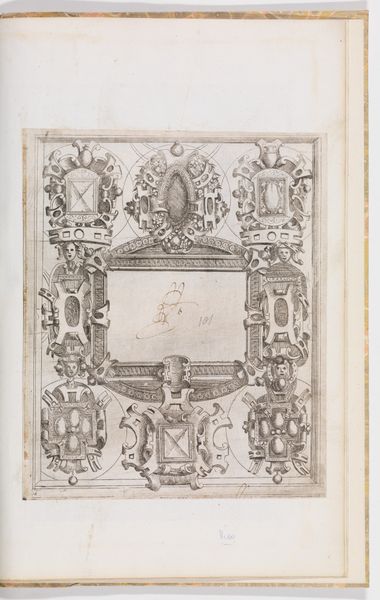
Dimensions: height 545 mm, width 420 mm
Copyright: Rijks Museum: Open Domain
Editor: This print, "Erepoorten XXVII-XXX te Den Haag, 1747" by Albertus Frese, made in 1766, depicts a series of ceremonial arches. They seem so…formal and imposing, almost like stage sets. What do you see in this piece? Curator: These aren’t just architectural drawings; they are powerful statements about civic identity and power in 18th-century Netherlands. Consider the social context: these arches were likely erected for royal entries or important state occasions. Editor: So, these were temporary structures used for specific events? Curator: Exactly! They were ephemeral, designed to project a particular image of the state, using Baroque ornamentation to reinforce its authority and legitimize its rule. The architectural elements combined with national symbols created powerful and lasting propaganda. What do you observe about the symbolism within the arches? Editor: Well, I see flags and what look like coats of arms on some of them, and sculpted figures on others, a lot of emphasis on royalty. But did these displays actually resonate with the general population? Were they effective? Curator: That’s a crucial question. Were they celebratory spaces, or tools to intimidate its subjects? The flags, crowns, and statuary are deliberate displays of power, projecting the Dutch Republic’s wealth and influence but maybe excluding marginalized members of society, revealing existing cultural and societal power structures. Editor: It's interesting to think about how even temporary structures like these can reveal so much about the society that created them. Curator: Absolutely. By interrogating the artwork in relation to society and class, these historical markers give important meaning to how identity shapes and reinforces the narratives that still reverberate today.
Comments
No comments
Be the first to comment and join the conversation on the ultimate creative platform.
